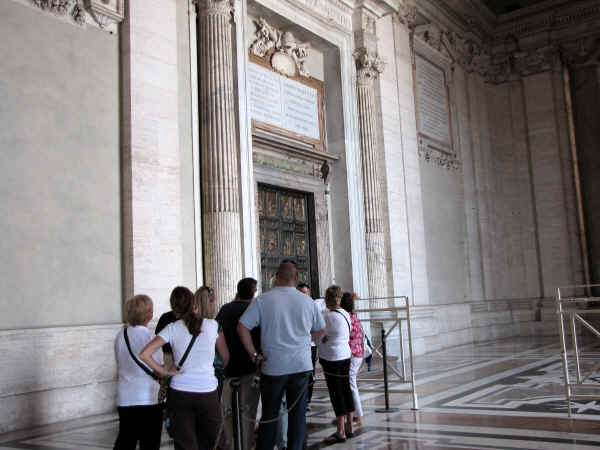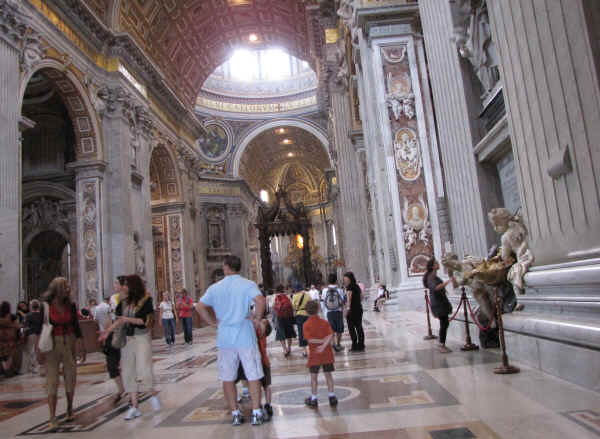
| St. Peter's Basilica is the largest Christian church in
the world. It is not the cathedral of Rome as many
think; that honor goes to the older Basilica di San Giovanni di
Laterano on the southeast side of the city. To Catholic Christians
though, St. Peter's is one of the most sacred spots on earth, second
only to a Judean hill outside the old city of Jerusalem. Directly
below the main altar of St. Peter's, a reliquary in the crypt holds the
earthly remains of Simon, the Galilean fisherman, who became Peter, the
Bishop of Rome and the first Pope. A few hundred meters south of
here, in a stadium called the Circus of Nero, Peter was crucified
on the orders of the Emperor Nero. He was buried on the Vatican
Hill and early Christians often gathered at his grave. A basilica
was erected over the grave by Emperor Constantine, the first Christian
Roman Emperor, in 333 AD. The present structure was built over the
same site.
The pictures on this page are a sampling of the photos I took there. A very small sample. No one ever takes enough pictures at St. Peter's. |
| This is arguably one of the finest pieces of art ever created, the Pieta by Michelangelo located in a small chapel on the right aisle near the entrance. The picture is not perfectly focused and I couldn't eliminate the reflection above the statue. The extreme security glass barrier was installed after a lunatic attacked the statue a few years back and damaged it severely. He felt he was doing a service to the world because he was convinced that Catholics worship idols. Incidentally, if you want to compare the work to your own achievements in life, Michelangelo completed this work when he was 25 years old. |
 |
|
|
 |
|
|
|
|
|
|
|
|
|
|
|
|
|
|
|
|
|